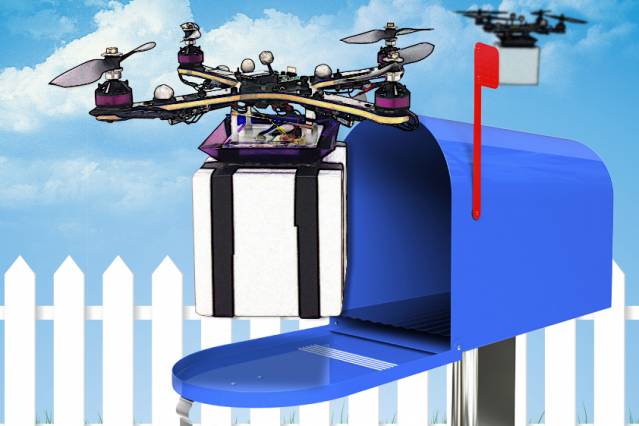Delivery by drone: will it work?
August 22, 2014 | Source: New algorithms do optimized routing and let drones monitor their own health during long package-delivery missions

(Credit: Christine Daniloff/MIT – photograph of quadrotor courtesy of the researchers)
MIT researchers have devised computational solutions to reduce the chances that Amazon’s planned delivery drones will crash and burn — along with your stuff.
It’s complicated. Drones have to deal with iffy factors like high winds, low fuel/power level, component failures, and even possible shooters in some locations.
So with Boeing support, the researchers developed two fixes.
- An algorithm enables a drone to monitor aspects of its “health” in real time.
- An efficient way to compute possible future locations and routes to reach a destination without colliding with obstacles, using a Markov Decision Process (MDP), a sequential decision-making framework that resembles a “tree” of possible actions.
Meanwhile, it looks like India, not the U.S. (with its restrictive aviation laws), will be Amazon’s launch pad for its ts Prime Air drone, with trials planned in Mumbai and Bangalore (cities where Amazon has warehouses) this fall, according to The Economic Times.
Abstract of IEEE/RSJ International Conference on Intelligent Robots and Systems presentation
In persistent missions, taking system’s health and capability degradation into account is an essential factor to predict and avoid failures. The state space in health-aware planning problems is often a mixture of continuous vehicle-level and discrete mission-level states. This in particular poses a challenge when the mission domain is partially observable and restricts the use of computationally expensive forward search methods. This paper presents a method that exploits a structure that exists in many health-aware planning problems and performs a two-layer planning scheme. The lower layer exploits the local linearization and Gaussian distribution assumption over vehicle-level states while the higher layer maintains a non-Gaussian distribution over discrete mission-level variables. This two-layer planning scheme allows us to limit the expensive online forward search to the mission-level states, and thus predict system’s behavior over longer horizons in the future. We demonstrate the performance of the method on a long duration package delivery mission using a quadrotor in a partially-observable domain in the presence of constraints and health/capability degradation.